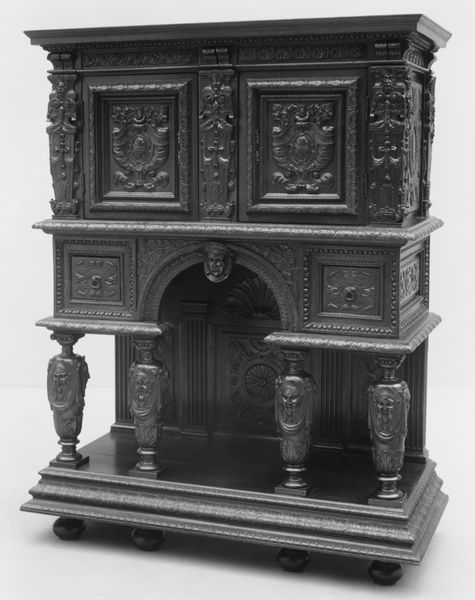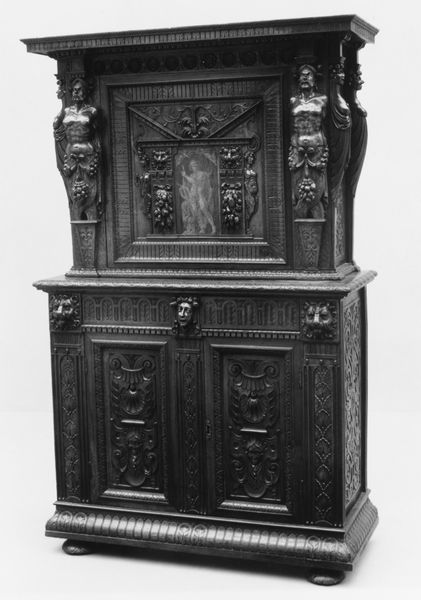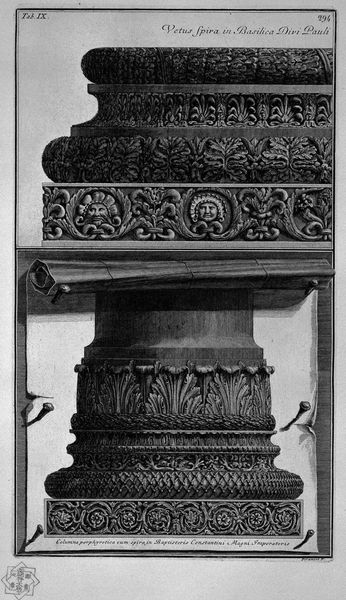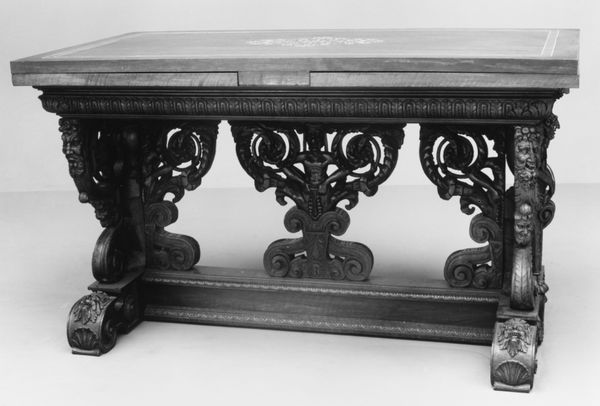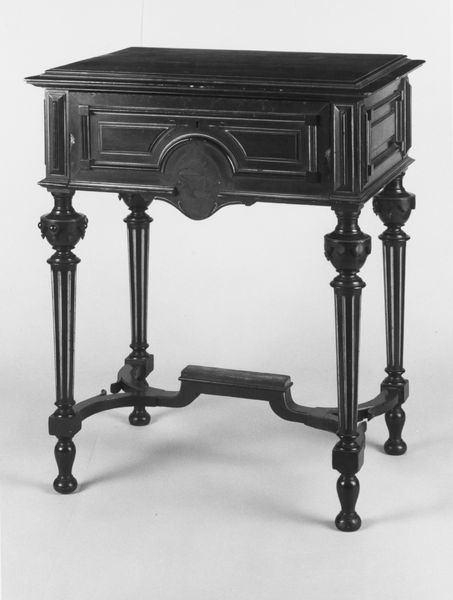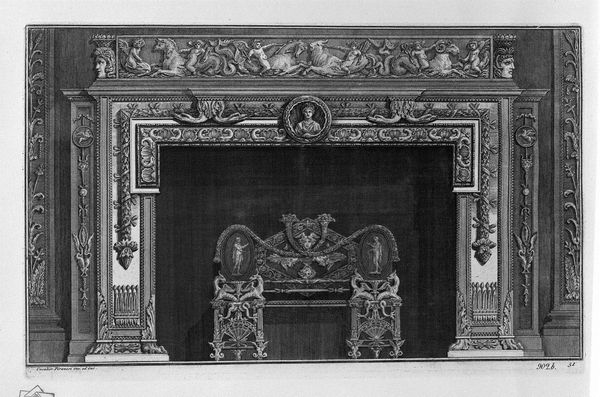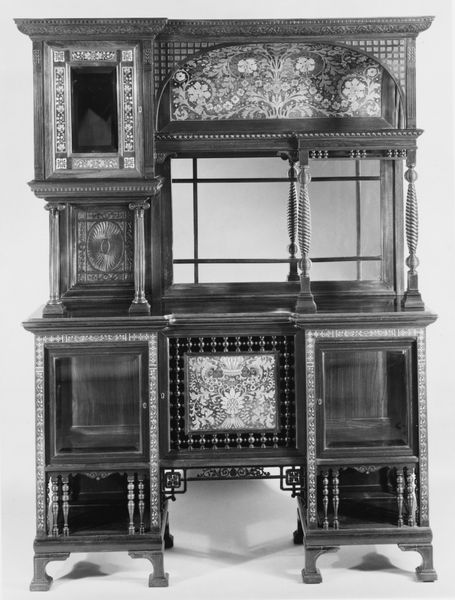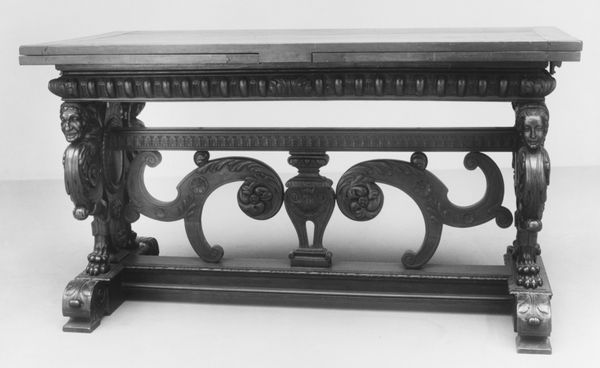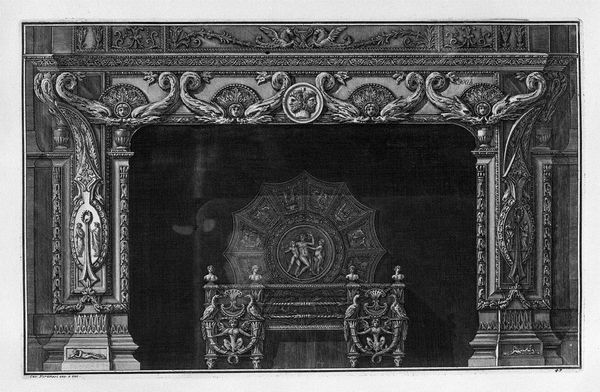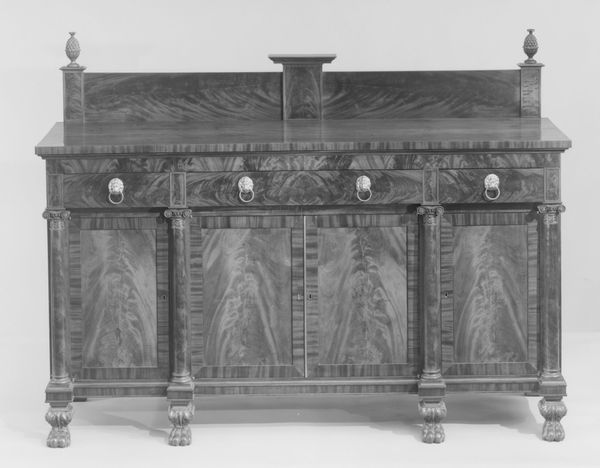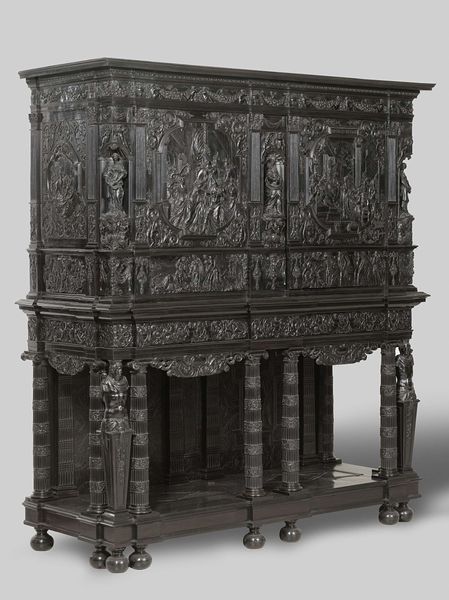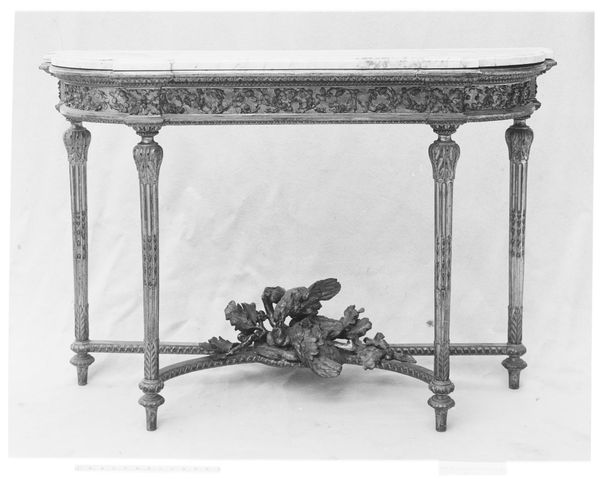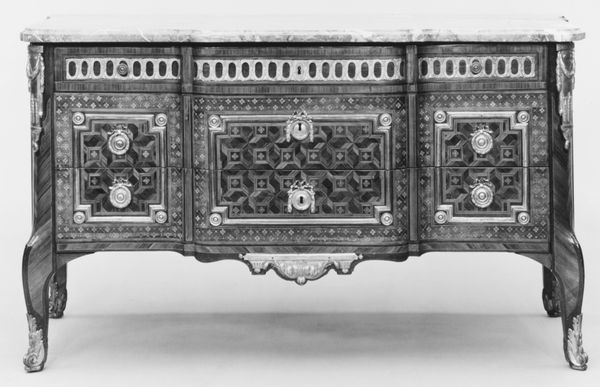
carving, sculpture, wood
#
carving
#
sculpture
#
furniture
#
11_renaissance
#
sculpture
#
wood
#
decorative-art
Dimensions: 67 1/4 × 47 × 22 in. (170.8 × 119.4 × 55.9 cm)
Copyright: Public Domain
Editor: This is the "Cabinet" by Hugues Sambin, from the 19th century. It's currently housed at the Metropolitan Museum of Art. The level of detail is amazing—there’s just so much going on with all the carvings. I wonder, with a piece like this, what was its place in the world when it was made? Curator: It’s crucial to remember that furniture like this "Cabinet" wasn’t just practical; it was a powerful status symbol. In the 19th century, owning intricately carved pieces demonstrated wealth, taste, and connection to earlier eras, like the Renaissance. Where do you think such furniture was placed and by who it was appreciated? Editor: I guess in a really prominent place in someone’s house—to impress visitors? Maybe also intellectuals, if it connected to the Renaissance like you said. It feels like it would be something for scholars as well. Curator: Exactly. Owning art was an essential element of shaping social identity. This piece is from a moment of intense competition in Europe, and luxury objects had a political role beyond just aesthetic pleasure, for instance, they could establish ties with earlier periods of greatness and power. So, how do you view this artwork in today's setting of the Met? Editor: That’s a great point; it does recontextualize it completely. Now it is displayed for all in a public setting, regardless of status or social background, and the original political power has completely evaporated. That actually gives me a completely new perspective. Curator: And understanding how its meaning has shifted helps us appreciate not only the craftsmanship but also the complex story of its journey through time and different political landscapes. Editor: I definitely see that now, seeing how the cabinet tells a story about wealth and social standing across different eras. It's pretty incredible how it reflects its society then and still prompts thought now.
Comments
No comments
Be the first to comment and join the conversation on the ultimate creative platform.
